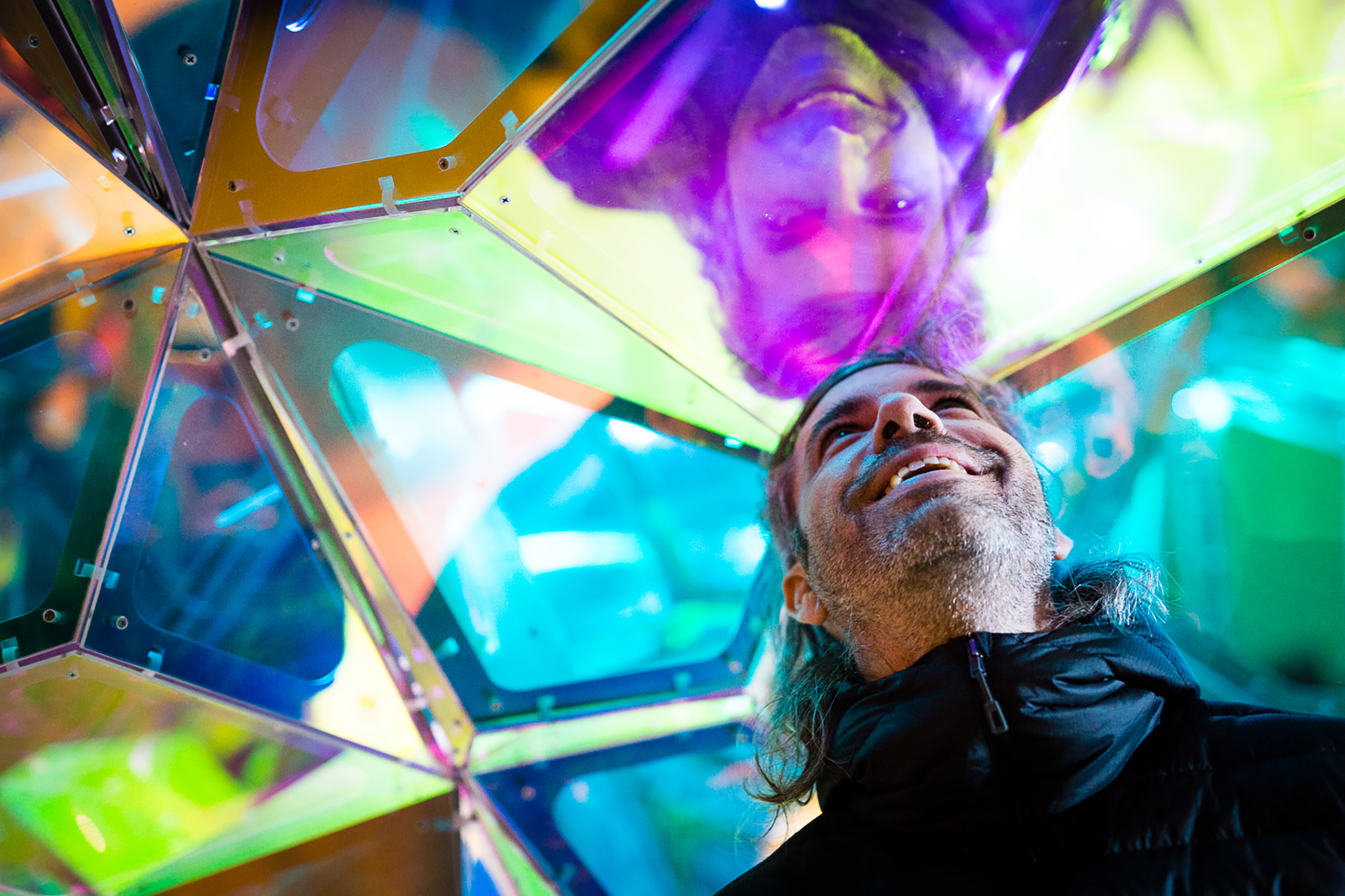Mirror Mirror was created by SOFTlab, a New York-based design studio led by artist and architect Michael Szivos.
Visitors can walk inside and around this installation that takes the form of an opened circle, 25 feet in diameter and 8 feet high. Like a lighthouse, this structure-in-the-round is both a place to look outward at your surroundings and a beacon to be seen from afar. The materials and interactive nature of the artwork reference the special type of lens used at Alexandria’s own historic Jones Point Lighthouse – called the Fresnel lens – the most advanced lens technology of the 1800s, which used a series of prisms to concentrate the light source and direct it into a narrow horizontal beam that was projected outward.
Playing with the ideas of reflection and refraction of light, Mirror Mirror’s interior and exterior are clad with a mirrored surface that reflects the surrounding environment in unexpected ways. While the exterior is a monochromatic mirror that reflects the urban environment, the river and visitors themselves, the interior’s mirrored surface is tinted with the full color spectrum, providing another layer of vibrancy and interest.
The artwork is also programmed to respond to sound with light, allowing visitors to interact with the artwork and affect its appearance using their voices and bodies. LED fixtures inside each of the artwork’s vertical components are activated by sound and respond by producing light, transforming the front-facing panels from mirrored to transparent, while the interior panels remain mirrored, creating an infinite, colorful reflection that Szivos compares to “a forest of light.”
